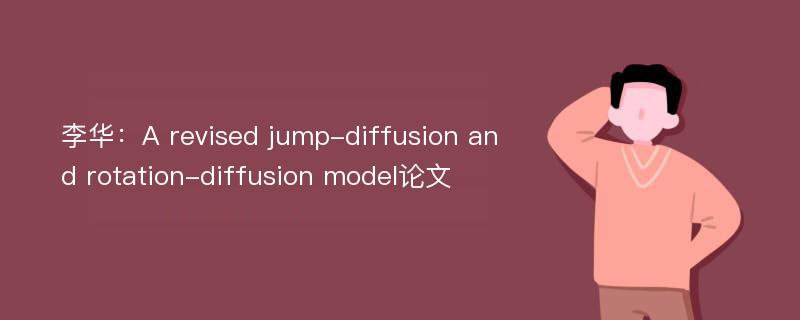
本文主要研究内容
作者李华,陈昱沆,唐宾泽(2019)在《A revised jump-diffusion and rotation-diffusion model》一文中研究指出:Quasi-elastic neutron scattering(QENS) has many applications that are directly related to the development of highperformance functional materials and biological macromolecules, especially those containing some water. The analysis method of QENS spectra data is important to obtain parameters that can explain the structure of materials and the dynamics of water. In this paper, we present a revised jump-diffusion and rotation-diffusion model(rJRM) used for QENS spectra data analysis. By the rJRM, the QENS spectra from a pure magnesium-silicate-hydrate(MSH) sample are fitted well for the Q range from 0.3 -1 to 1.9 -1 and temperatures from 210 K up to 280 K. The fitted parameters can be divided into two kinds. The first kind describes the structure of the MSH sample, including the ratio of immobile water(or bound water) C and the confining radius of mobile water a0. The second kind describes the dynamics of confined water in pores contained in the MSH sample, including the translational diffusion coefficient Dt, the average translational residence timeτ0, the rotational diffusion coefficient Dr, and the mean squared displacement(MSD) u2. The r JRM is a new practical method suitable to fit QENS spectra from porous materials, where hydrogen atoms appear in both solid and liquid phases.
Abstract
Quasi-elastic neutron scattering(QENS) has many applications that are directly related to the development of highperformance functional materials and biological macromolecules, especially those containing some water. The analysis method of QENS spectra data is important to obtain parameters that can explain the structure of materials and the dynamics of water. In this paper, we present a revised jump-diffusion and rotation-diffusion model(rJRM) used for QENS spectra data analysis. By the rJRM, the QENS spectra from a pure magnesium-silicate-hydrate(MSH) sample are fitted well for the Q range from 0.3 -1 to 1.9 -1 and temperatures from 210 K up to 280 K. The fitted parameters can be divided into two kinds. The first kind describes the structure of the MSH sample, including the ratio of immobile water(or bound water) C and the confining radius of mobile water a0. The second kind describes the dynamics of confined water in pores contained in the MSH sample, including the translational diffusion coefficient Dt, the average translational residence timeτ0, the rotational diffusion coefficient Dr, and the mean squared displacement(MSD) u2. The r JRM is a new practical method suitable to fit QENS spectra from porous materials, where hydrogen atoms appear in both solid and liquid phases.
论文参考文献
论文详细介绍
论文作者分别是来自Chinese Physics B的李华,陈昱沆,唐宾泽,发表于刊物Chinese Physics B2019年05期论文,是一篇关于,Chinese Physics B2019年05期论文的文章。本文可供学术参考使用,各位学者可以免费参考阅读下载,文章观点不代表本站观点,资料来自Chinese Physics B2019年05期论文网站,若本站收录的文献无意侵犯了您的著作版权,请联系我们删除。
